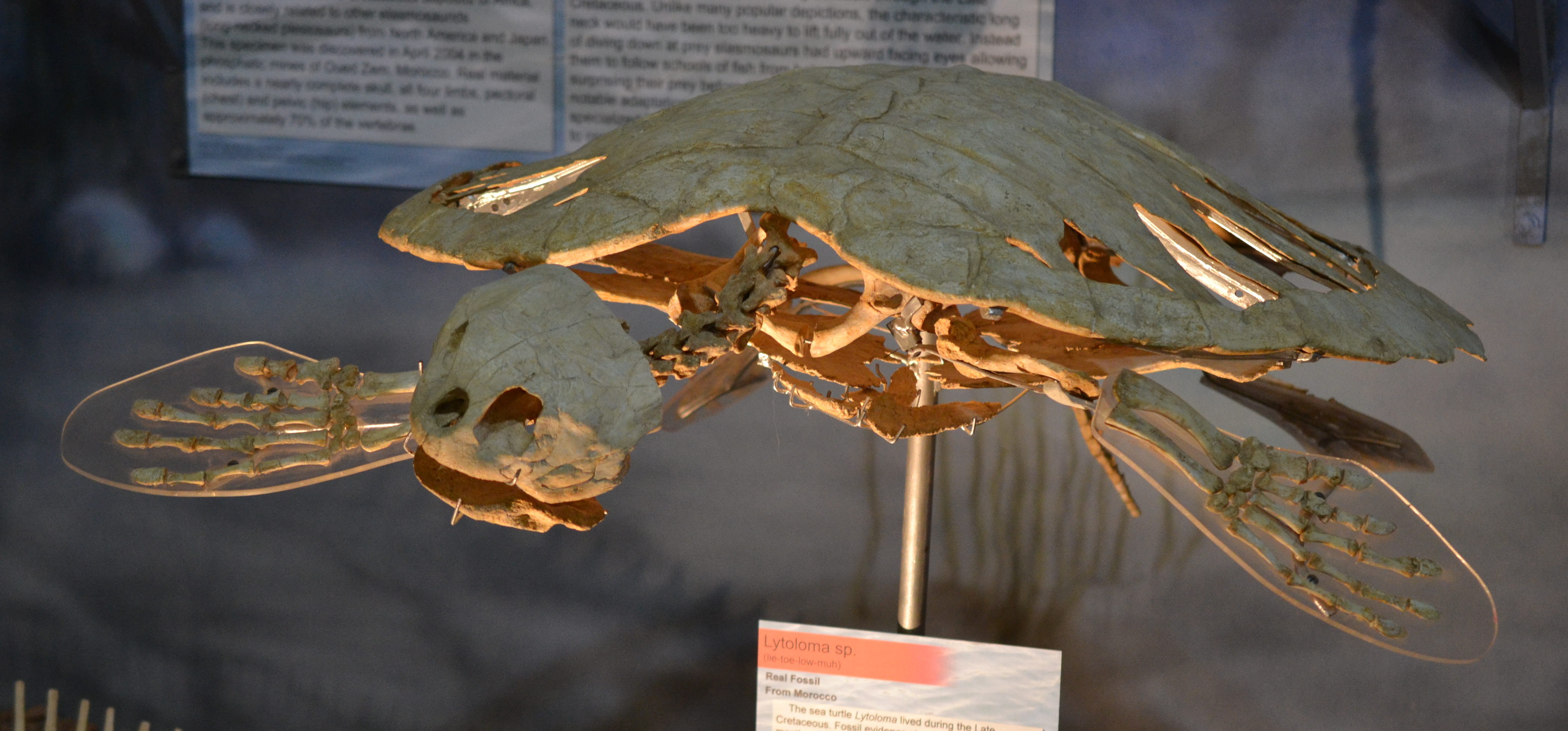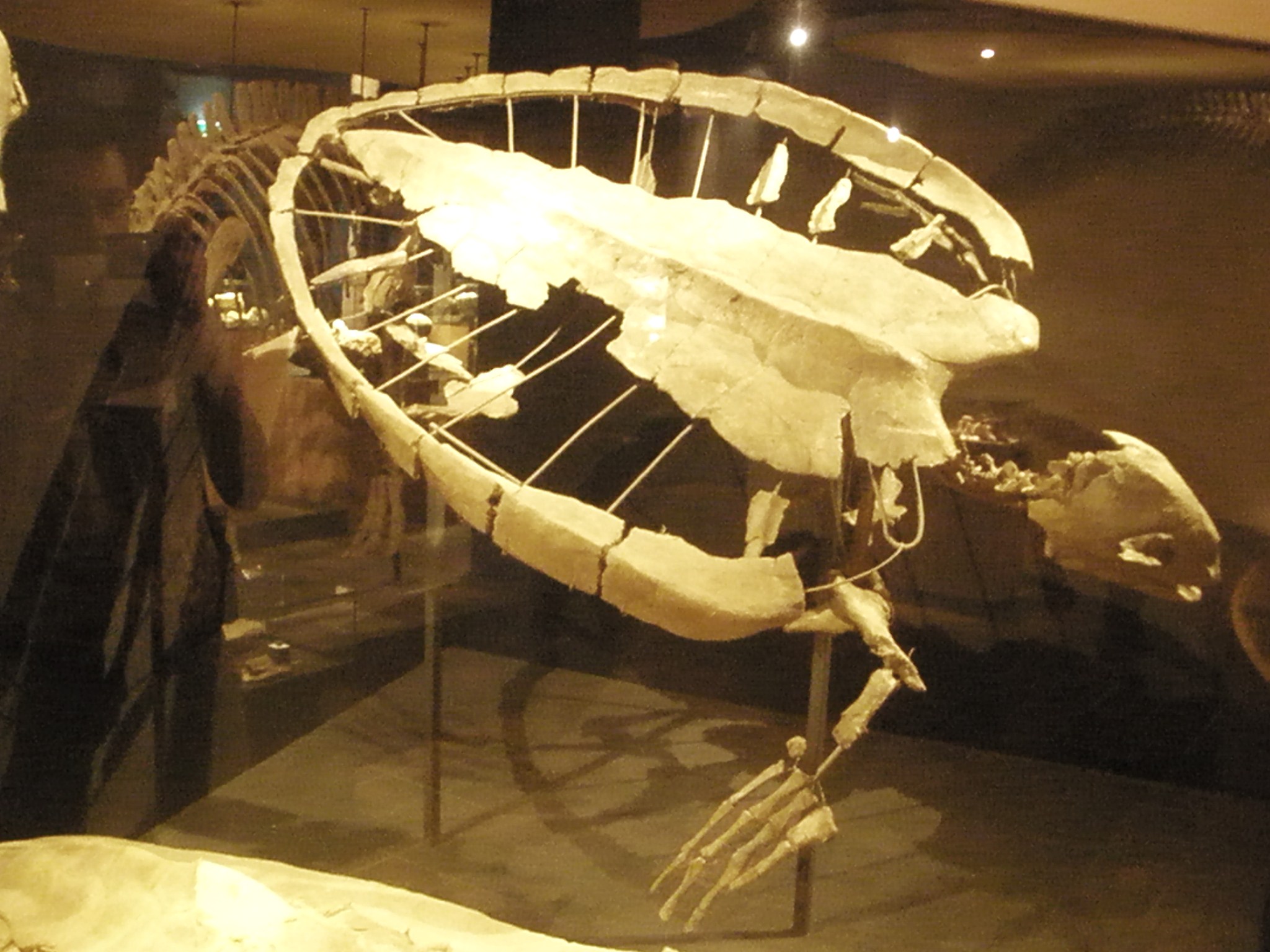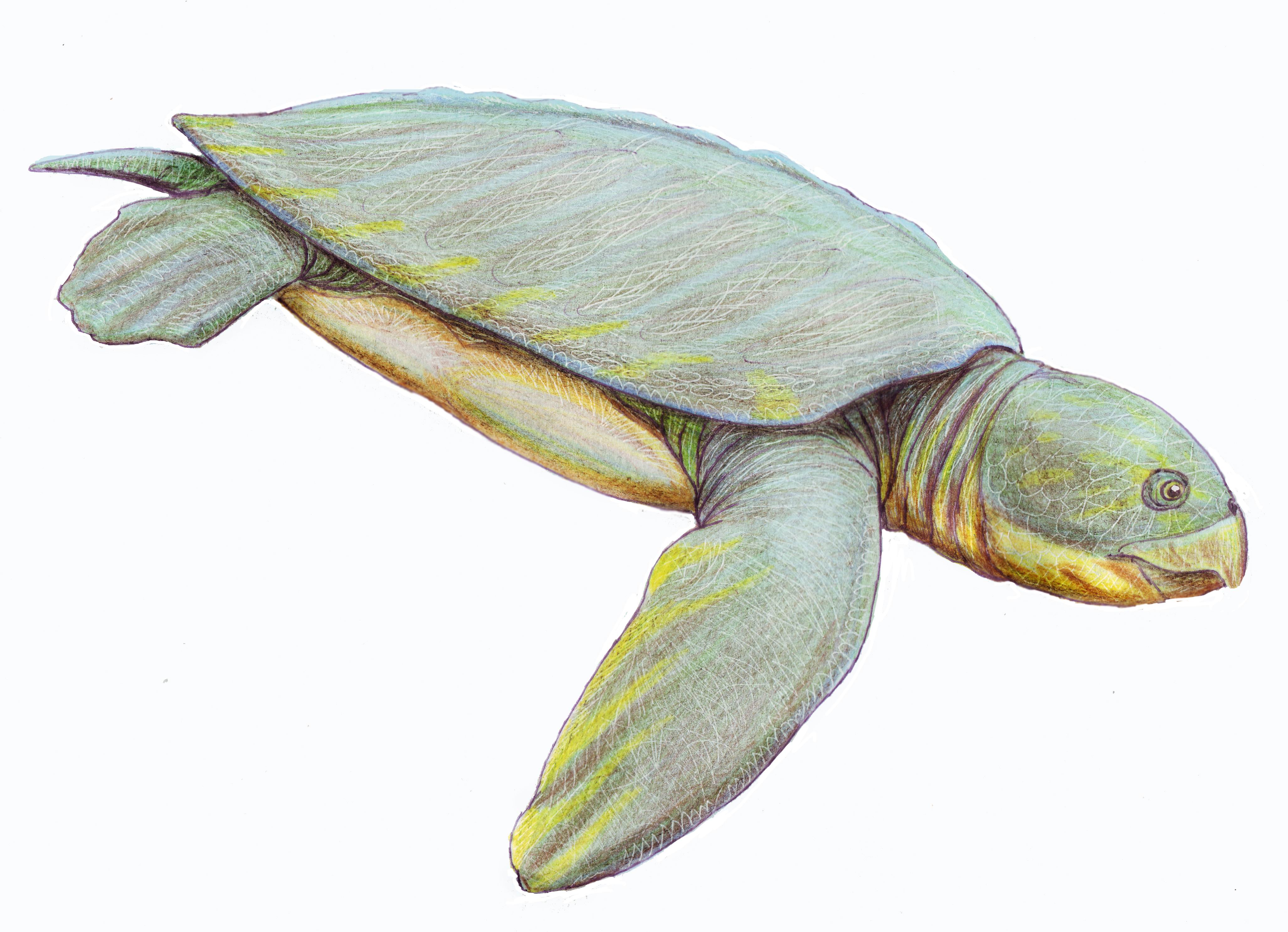|
Pancheloniidae
Pancheloniidae is a clade of sea turtles It is defined as all turtles more closely related to cheloniid sea turtles than to dermochelyid ("leatherback") sea turtles.Joyce W.G, Parham J.F, Gauthier J.A. Developing a protocol for the conversion of rank-based taxon names to phylogenetically defined clade names, as exemplified by turtles. J. Paleont. 2004;78:989–1013. Genera The following genera are placed here: * †'' Argillochelys'' * †'' Catapleura'' * † Ctenochelyidae * †'' Erquelinnesia'' * '' Glossochelys'' * †'' Glyptochelone'' * †'' Itilochelys * †'' Lytoloma'' * †''Osteopygis'' * †'' Pampaemys'' * †'' Peritresius'' * †'' Porthochelys'' * †'' Prionochelys'' * †''Procolpochelys'' * †'' Retechelys'' * †'' Thinochelys'' Historic taxon placement The following list of non-cheloniid pancheloniid species was published by Hirayama and Tong in 2003 * †'' Allopleuron hoffmani, later assigned to Cheloniidae * †'' Catapleura arcansaw'' * †'' Catap ... [...More Info...] [...Related Items...] OR: [Wikipedia] [Google] [Baidu] |
Allopleuron Hoffmani
''Allopleuron'' is a genus of extinct sea turtle, which measured long in life. The type species is ''Allopleuron hofmanni''. It is a basal member of the clade Pancheloniidae, closely related to ''Protosphargis''. Similar to ''Protosphargis'', it was characterized by shell reduction. Fossil history ''Allopleuron'' lived from the Early Cretaceous ( Cenomanian age, 94.3 Ma) to the Oligocene (Rupelian age, 28.4 Ma), therefore surviving the Cretaceous-Paleogene extinction event. Fossils have been found from Germany, the Netherlands, Kazakhstan and the United States. Life history ''Allopleuron'' was believed to have used the Laurasian-Holarctic The Holarctic realm is a biogeographic realm that comprises the majority of habitats found throughout the continents in the Northern Hemisphere. It corresponds to the floristic Boreal Kingdom. It includes both the Nearctic zoogeographical regi ... southern continental shelf as a breeding area. The modern day location of the breedin ... [...More Info...] [...Related Items...] OR: [Wikipedia] [Google] [Baidu] |
Ctenochelys
''Ctenochelys'' is an extinct genus of marine turtle (Cryptodira, Pancheloniidae), which existed during the Cretaceous period, and lived in the shallow waters of the Western Interior Seaway. Its fossils have been found in the Ripley Formation and Mooreville Chalk of central Alabama, United States. It was first named by C.H. Sternberg in 1904, and contains two species, ''C. stenoporus'' and ''C. acris''. Species *''Ctenochelys stenoporus'' is the type species. It was originally thought to be a species of ''Toxochelys''; ''T. bauri'', until Sternberg declared it a separate genus. The two genera are similar in carapaces. *''Ctenochelys acris'' was first named by Zangerl in 1953 and is now thought to be one of the earliest ancestors of modern cheloniid Cheloniidae is a family of typically large marine turtles that are characterised by their common traits such as, having a flat streamlined wide and rounded shell and almost paddle-like flippers for their forelimbs. They are the o ... [...More Info...] [...Related Items...] OR: [Wikipedia] [Google] [Baidu] |
Sea Turtle
Sea turtles (superfamily Chelonioidea), sometimes called marine turtles, are reptiles of the order Testudines and of the suborder Cryptodira. The seven existing species of sea turtles are the flatback, green, hawksbill, leatherback, loggerhead, Kemp's ridley, and olive ridley sea turtles. All six of the sea turtle species present in US waters (all of those listed above except the flatback) are listed as endangered and/or threatened under the Endangered Species Act. The seventh sea turtle species is the flatback, which exists in the waters of Australia, Papua New Guinea and Indonesia. Sea turtles can be separated into the categories of hard-shelled (cheloniid) and leathery-shelled ( dermochelyid).Wyneken, J. 2001. The Anatomy of Sea Turtles. U.S Department of Commerce NOAA Technical Memorandum NMFS-SEFSC-470, 1-172 pp. There is only one dermochelyid species which is the leatherback sea turtle. Description For each of the seven types of sea turtles, females and males are ... [...More Info...] [...Related Items...] OR: [Wikipedia] [Google] [Baidu] |
Cheloniidae
Cheloniidae is a family of typically large marine turtles that are characterised by their common traits such as, having a flat streamlined wide and rounded shell and almost paddle-like flippers for their forelimbs. They are the only sea turtles to have stronger front limbs than back limbs. The six species that make up this family are: the green sea turtle, loggerhead sea turtle, olive ridley sea turtle, hawksbill sea turtle, flatback sea turtle and the Kemp's ridley sea turtle. Morphology In contrast to their earth-bound relatives, tortoises, sea turtles do not have the ability to retract their heads into their shells. Their plastron, which is the bony plate making up the underside of a turtle or tortoise's shell, is comparably more reduced from other turtle species and is connected to the top part of the shell by ligaments without a hinge separating the pectoral and abdominal plates of the plastron. Sizes among the seven species of sea turtles range from 71 to 213 cm; for ex ... [...More Info...] [...Related Items...] OR: [Wikipedia] [Google] [Baidu] |
Glossochelys
''Glossochelys'' is an extinct genus of sea turtles from the Pancheloniidae that has been discovered in Eocene (Ypresian) deposits in Harwich, England (London Clay Formation) that was first described as a species of ''Lytoloma'' in 1842. The type species, ''G. planimentum'', was described as a separate species in 1871 by Harry Seeley. It was possibly the same animal as ''Euclastes'' or ''Erquelinnesia''.E. D. Cope. 1870. Synopsis of the Extinct Batrachia, Reptilia and Aves of North America. Part II. ''Transactions of the American Philosophical Society, New Series'' 14:105-235 References Chelonioidea Prehistoric turtle genera Ypresian genus first appearances Eocene genus extinctions Eocene turtles Eocene reptiles of Europe Fossils of England Fossil taxa described in 1871 {{Turtle-stub ... [...More Info...] [...Related Items...] OR: [Wikipedia] [Google] [Baidu] |
Ctenochelyidae
''Ctenochelys'' is an extinct genus of marine turtle (Cryptodira The Cryptodira ('' el, hidden neck'') are a suborder of Testudines that includes most living tortoises and turtles. Cryptodira differ from Pleurodira (side-necked turtles) in that they lower their necks and pull the heads straight back into t ..., Pancheloniidae), which existed during the Cretaceous period, and lived in the shallow waters of the Western Interior Seaway. Its fossils have been found in the Ripley Formation and Mooreville Chalk of central Alabama, United States. It was first named by C.H. Sternberg in 1904, and contains two species, ''C. stenoporus'' and ''C. acris''. Species *''Ctenochelys stenoporus'' is the type species. It was originally thought to be a species of ''Toxochelys''; ''T. bauri'', until Sternberg declared it a separate genus. The two genera are similar in carapaces. *''Ctenochelys acris'' was first named by Zangerl in 1953 and is now thought to be one of the earliest ancestor ... [...More Info...] [...Related Items...] OR: [Wikipedia] [Google] [Baidu] |
Late Cretaceous
The Late Cretaceous (100.5–66 Ma) is the younger of two epochs into which the Cretaceous Period is divided in the geologic time scale. Rock strata from this epoch form the Upper Cretaceous Series. The Cretaceous is named after ''creta'', the Latin word for the white limestone known as chalk. The chalk of northern France and the white cliffs of south-eastern England date from the Cretaceous Period. Climate During the Late Cretaceous, the climate was warmer than present, although throughout the period a cooling trend is evident. The tropics became restricted to equatorial regions and northern latitudes experienced markedly more seasonal climatic conditions. Geography Due to plate tectonics, the Americas were gradually moving westward, causing the Atlantic Ocean to expand. The Western Interior Seaway divided North America into eastern and western halves; Appalachia and Laramidia. India maintained a northward course towards Asia. In the Southern Hemisphere, Australia a ... [...More Info...] [...Related Items...] OR: [Wikipedia] [Google] [Baidu] |
Procolpochelys
''Procolpochelys'' is an extinct genus of sea turtle from the Miocene of what is now Maryland, Virginia, and New Jersey. Its fossils have been found in the Calvert Formation. It was first named by Hay in 1908. References External links ''Procolpochelys''at the Paleobiology Database www.scistp.org Cryptodira Fossils of the United States Miocene turtles Prehistoric turtle genera Taxa named by Oliver Perry Hay Extinct turtles {{paleo-turtle-stub ... [...More Info...] [...Related Items...] OR: [Wikipedia] [Google] [Baidu] |
Fossilworks
Fossilworks is a portal which provides query, download, and analysis tools to facilitate access to the Paleobiology Database, a large relational database assembled by hundreds of paleontologists from around the world. History Fossilworks was created in 1998 by John Alroy and is housed at Macquarie University. It includes many analysis and data visualization tools formerly included in the Paleobiology Database.{{cite web, title=Frequently asked questions, url=http://www.fossilworks.org/cgi-bin/bridge.pl?page=FAQ, publisher=Fossilworks, access-date=17 December 2021 References {{Reflist External links {{Wikidata property, P842 * [Baidu] |
Tasbacka
''Tasbacka'' is an extinct genus of sea turtle containing several species. Though the type species, ''T. aldabergeni'', has only been found in Kazakhstan, ''Tasbacka'' had a wide distribution. ''T. ruhoffi'' was found in the eastern USA, ''T. danica'' in modern Denmark, ''T. ouledabdounensis'' in modern Morocco, ''T. salisburgensis'' in modern Austria, and ''T. germanica'' in modern Germany. In 2008, researchers found a well-preserved, juvenile specimen of ''T. danica'' in Denmark's Fur Formation The Fur Formation is a marine geological formation of Ypresian ( Lower Eocene Epoch, c. 56.0-54.5 Ma) age which crops out in the Limfjord region of Denmark from Silstrup via Mors and Fur to Ertebølle, and can be seen in many cliffs and quarries .... Some of the fossil's soft tissues remained. The specimen, dating back to 54 Ma, contained eumelanin. This pigment would've given the hatchling a dark shell while it was alive. Modern sea turtle hatchlings also have dark shells; while ... [...More Info...] [...Related Items...] OR: [Wikipedia] [Google] [Baidu] |




